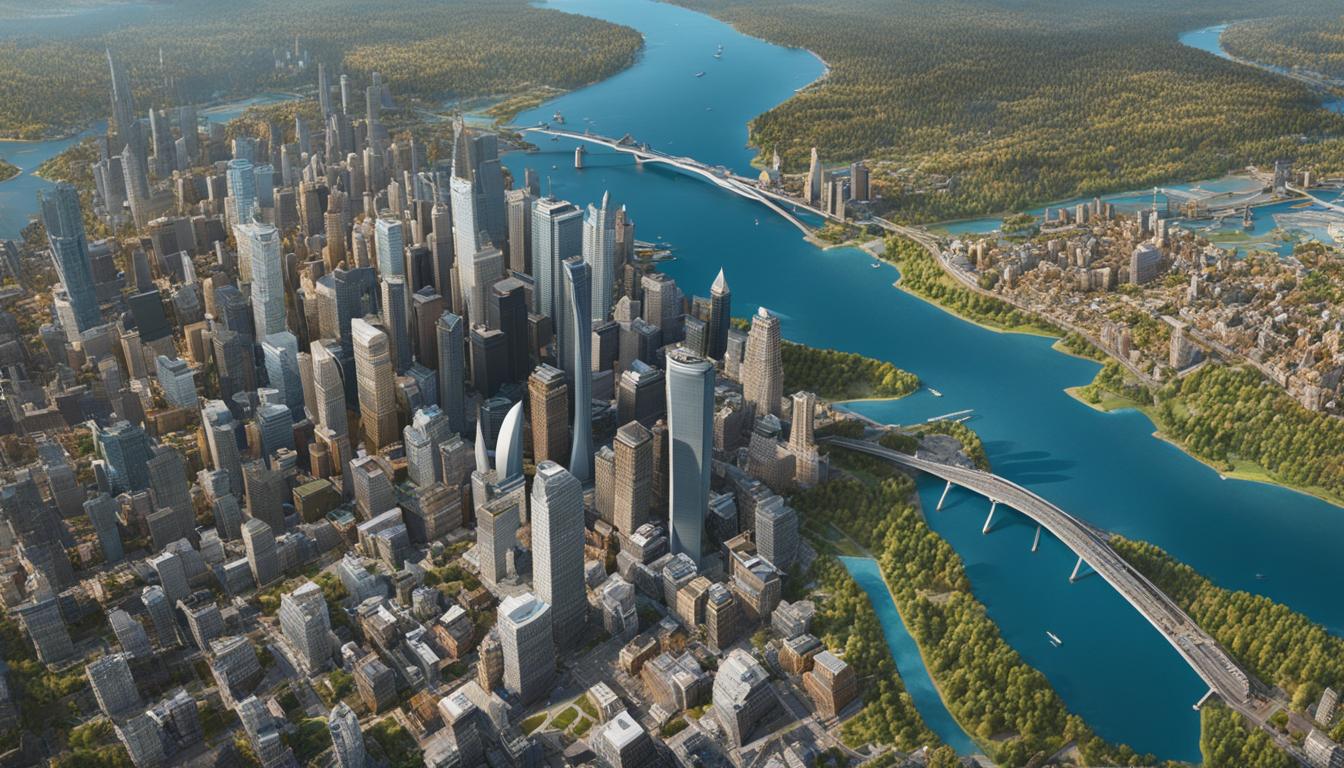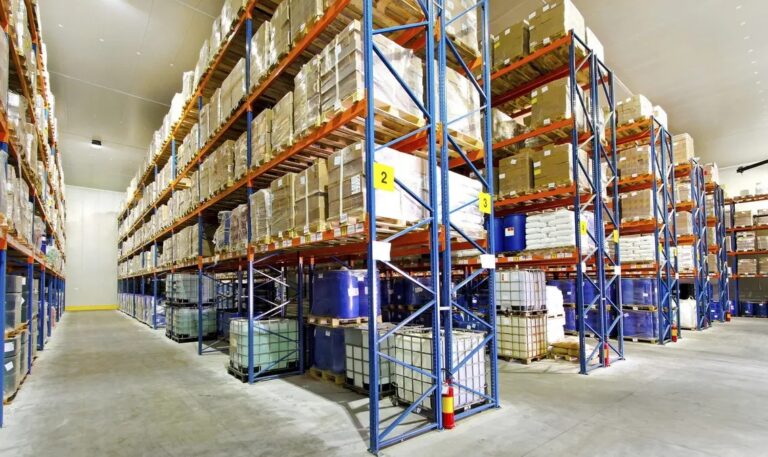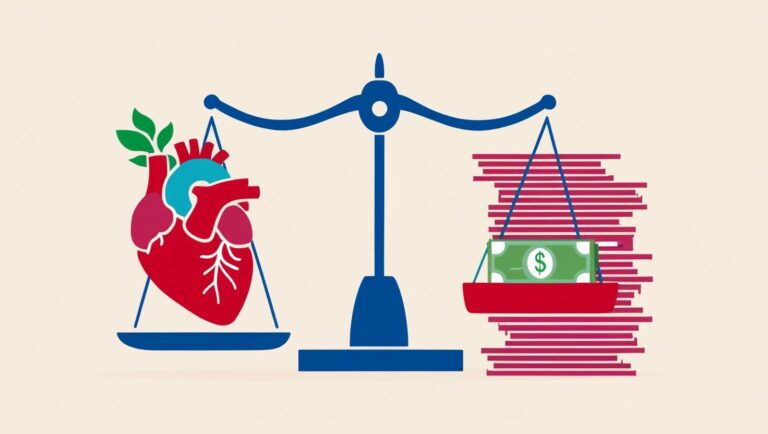Canada is a country known for its vast landscapes, diverse cultures, and thriving urban centers. In this article, I will delve into the biggest cities in Canada in 2024, ranked by population. These cities are not only the largest in terms of population but also the top destinations for residents and tourists alike.
From the bustling metropolises of Toronto and Montreal to the scenic coastal city of Vancouver, each city has its own unique charm and attractions. Whether you’re interested in exploring multicultural neighborhoods, experiencing vibrant arts scenes, or enjoying outdoor recreational activities, Canada’s biggest cities offer something for everyone.
Let’s dive into the details of each city and discover what makes them so special.
Table of Contents
Key Takeaways:
- Toronto is the most populated city in Canada with a population of 2.9 million in 2024.
- Montreal is the second largest city in Canada, known for its rich cultural heritage and vibrant arts scene.
- Calgary is a growing city in the west, serving as a major economic hub in Alberta.
- Ottawa is the capital city of Canada, filled with historic landmarks and government institutions.
- Vancouver is a scenic coastal city celebrated for its natural beauty and thriving film industry.
Population of Toronto – 2024 Update
Toronto, Ontario is the largest city in Canada with a population of 2.9 million in 2024. It is known for its multiculturalism, vibrant city life, and economic opportunities. As the most populous city in Canada, Toronto attracts residents from all over the world, contributing to its diverse and dynamic culture.
With a thriving arts and entertainment scene, Toronto offers a wide range of attractions and activities for both residents and visitors. From world-class museums and galleries to lively music festivals and sporting events, there is always something happening in the city. The iconic CN Tower, which stands tall at 553 meters, offers breathtaking views of the cityscape and is a must-visit landmark.
In terms of economic opportunities, Toronto is a major financial and business hub, hosting the headquarters of many multinational corporations. The city’s diverse economy spans industries such as finance, technology, healthcare, and education. It is also home to top-ranked universities and research institutes, making it an attractive destination for students and professionals.
Overall, Toronto’s population growth reflects its appeal as a vibrant and cosmopolitan city. With its rich cultural diversity, thriving economy, and abundance of attractions, Toronto continues to be a top choice for individuals seeking a high quality of life and abundant opportunities.
Montreal: The Second Largest City in Canada
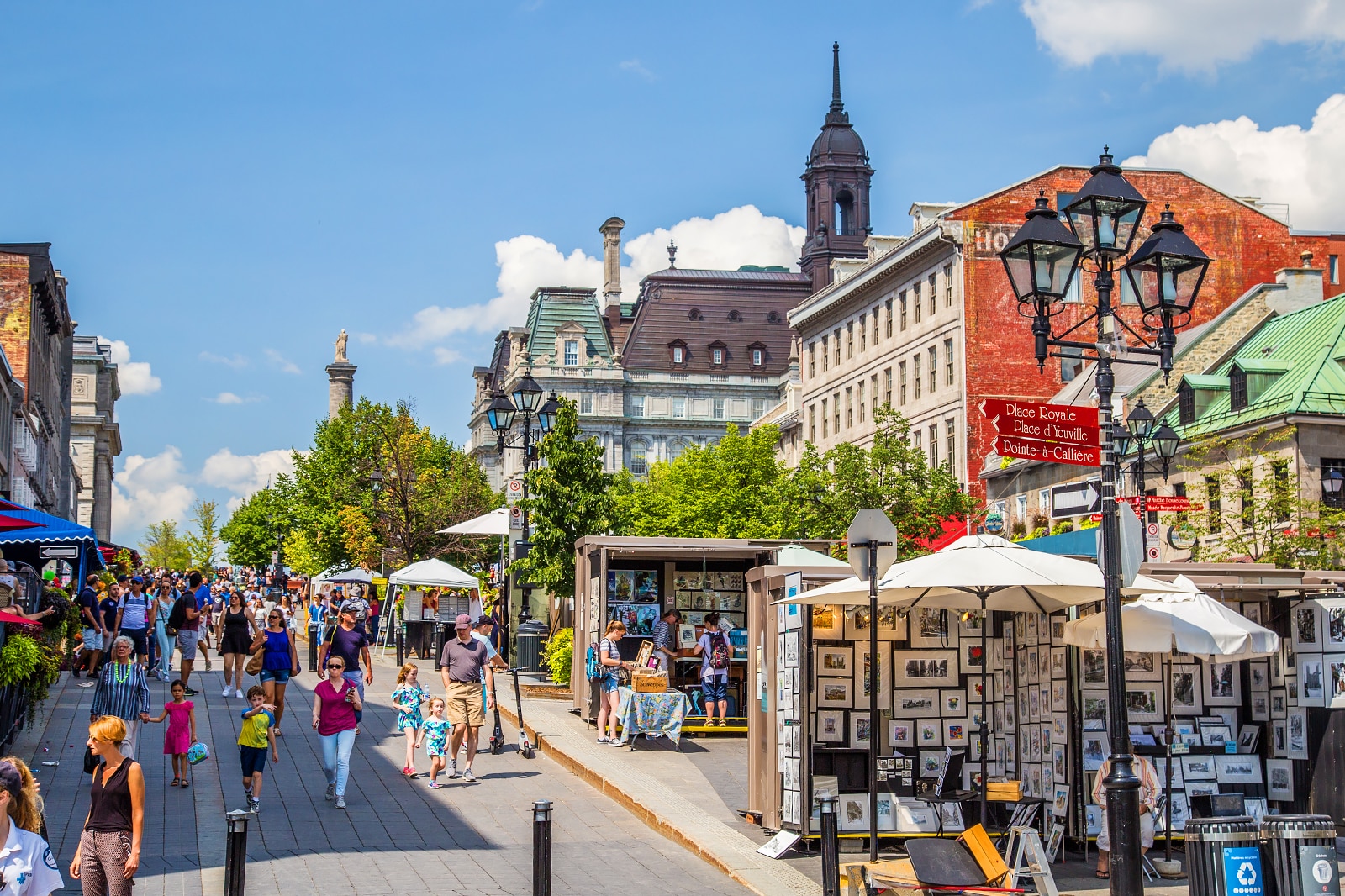
With a population of 1.76 million in 2024, Montreal proudly holds the title of the second largest city in Canada. Situated in the province of Quebec, Montreal is a vibrant and culturally rich metropolis that captivates visitors with its unique blend of European charm and North American flair.
Known as the largest city in Quebec, Montreal boasts a rich and diverse history, shaped by its French-speaking population and historic landmarks. From the cobblestone streets of Old Montreal to the iconic Notre-Dame Basilica, the city’s architecture and heritage tell the story of its past.
Montreal’s thriving arts scene is another highlight, attracting artists, musicians, and performers from around the world. The city is home to numerous festivals, including the renowned Montreal International Jazz Festival, Just for Laughs Comedy Festival, and Montreal Circus Festival, showcasing its commitment to celebrating the arts in all its forms.
Montreal: A Culinary Delight
No visit to Montreal would be complete without indulging in its world-class culinary offerings. The city is known for its diverse dining scene, with an abundance of cafes, bistros, and restaurants serving up everything from classic French cuisine to innovative fusion dishes. From the iconic Montreal bagels and poutine to the famous smoked meats of Schwartz’s Deli, the city’s food culture is a true delight for the taste buds.
| Cuisine | Specialty |
|---|---|
| French | Escargots de Bourgogne |
| Italian | Pizza Napoletana |
| Asian | Sushi |
| Canadian | Poutine |
Whether you’re exploring the charming streets of the Plateau-Mont-Royal neighborhood, enjoying the scenic beauty of Mount Royal Park, or experiencing the lively atmosphere of the city’s festivals, Montreal offers a vibrant and unforgettable experience for locals and tourists alike.
As the second largest city in Canada and the largest city in Quebec, Montreal continues to attract residents and visitors with its rich history, cultural diversity, and vibrant arts scene. With its undeniable charm and unique character, Montreal is a city that truly stands out on the Canadian landscape.
Calgary: A Growing City in the West
Calgary, located in the province of Alberta, is a major city in Canada with a population of 1.3 million in 2024. Known as the “Stampede City,” Calgary has experienced significant growth and development over the years. It is renowned for its thriving oil and gas industry, which has driven its economic prosperity.
This dynamic city offers a unique blend of natural beauty and urban convenience. Surrounded by stunning landscapes, including the nearby Rocky Mountains, Calgary provides residents and visitors with ample opportunities for outdoor recreation.
“Calgary is a city that combines a vibrant city life with easy access to the stunning natural landscapes of Western Canada. It offers a high quality of life and is a desirable place to live for both professionals and families.” – Jane Smith, Calgary resident
In addition to its natural beauty, Calgary is also home to a diverse cultural scene, with numerous festivals, events, and attractions that celebrate its heritage and multiculturalism. The city’s downtown core is bustling with iconic skyscrapers, including the impressive Calgary Tower, which offers panoramic views of the city and beyond.
| City | Population (2024) | Province |
|---|---|---|
| Toronto | 2.9 million | Ontario |
| Montreal | 1.76 million | Quebec |
| Calgary | 1.3 million | Alberta |
| Ottawa | 1.02 million | Ontario |
| Vancouver | 662,248 | British Columbia |
With its growing population and vibrant economy, Calgary is a city on the rise. Its unique combination of natural beauty, economic opportunities, and cultural attractions make it an enticing destination for both residents and visitors alike.

Ottawa: Canada’s Capital City
Ottawa, Ontario is the capital city of Canada, playing a pivotal role in the country’s political landscape. With a population of 1.02 million in 2024, Ottawa offers a unique blend of history, culture, and natural beauty.
One of the key attractions in Ottawa is Parliament Hill, home to the iconic Parliament Buildings and the Peace Tower. Visitors can explore the stunning Gothic Revival architecture, take guided tours, and even witness the changing of the guard ceremony. The nearby Rideau Canal, a UNESCO World Heritage site, is a popular spot for outdoor activities such as ice skating in winter and boating in summer.
As the capital city, Ottawa is also home to numerous national museums and galleries, including the National Gallery of Canada, the Canadian Museum of History, and the Canadian Museum of Nature. These institutions showcase the rich heritage and diverse culture of Canada, offering visitors a chance to delve into the country’s past and present.
| Population | 2023 |
|---|---|
| Ottawa | 1.02 million |
Ottawa’s cosmopolitan vibe is evident in its vibrant culinary scene, featuring a diverse range of international cuisines and local delicacies. The city also hosts numerous festivals throughout the year, such as Winterlude, Canada’s largest winter festival, and Canada Day celebrations on July 1st.
In addition to its cultural offerings, Ottawa is known for its high standard of living and strong economy. The city is home to a thriving technology sector, government institutions, and numerous employment opportunities. Its robust education system, including esteemed universities and colleges, further adds to the city’s appeal for residents and visitors alike.
Ottawa’s blend of history, natural beauty, cultural attractions, and economic opportunities make it a captivating destination and a symbol of Canadian identity.
Vancouver: The West Coast Metropolis
Vancouver, British Columbia is the fourth largest city in Canada with a population of 662,248 in 2024. Situated on the west coast, Vancouver is renowned for its breathtaking natural scenery, diverse cultural fabric, and thriving film industry. The city’s vibrant atmosphere, coupled with its high standard of living, makes it a popular destination for both residents and visitors.
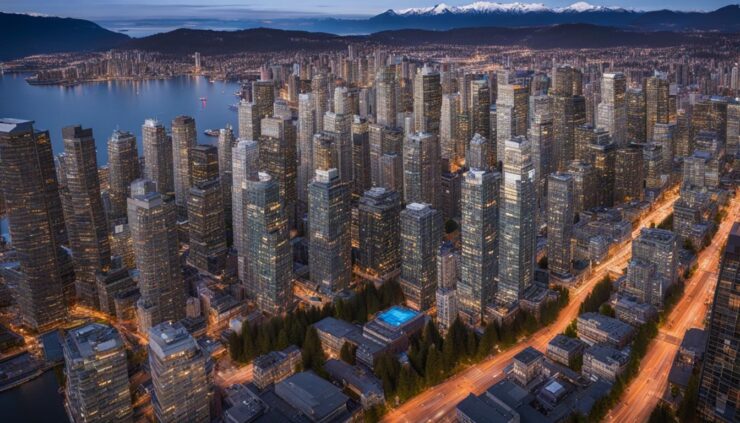
Diverse Population and Multiculturalism
Vancouver prides itself on its multiculturalism and diverse population. With a mix of ethnicities, languages, and cultures, the city offers a rich tapestry of experiences. The Asian influence is particularly prominent, with a large Chinese population and a bustling Chinatown that adds a unique charm to the cityscape.
Outdoor Opportunities and Stunning Natural Beauty
Surrounded by mountains and the Pacific Ocean, Vancouver is a paradise for outdoor enthusiasts. The city boasts numerous parks, gardens, and beaches, providing ample opportunities for hiking, biking, kayaking, and other recreational activities. Stanley Park, with its lush greenery and iconic seawall, is a must-visit destination, offering stunning views of the city skyline and the ocean.
A Thriving Film Industry
Vancouver has also gained international recognition as a hub for the film and television industry. The city’s picturesque locations, skilled workforce, and favorable tax incentives have attracted major film productions, earning it the nickname “Hollywood North.” The presence of film studios and opportunities for aspiring actors and filmmakers contribute to the city’s vibrant creative scene.
In conclusion, Vancouver stands out as a dynamic metropolis on the west coast of Canada. With its diverse population, stunning natural surroundings, and thriving film industry, the city offers a unique and captivating experience for residents and visitors alike.
Other Major Cities in Canada
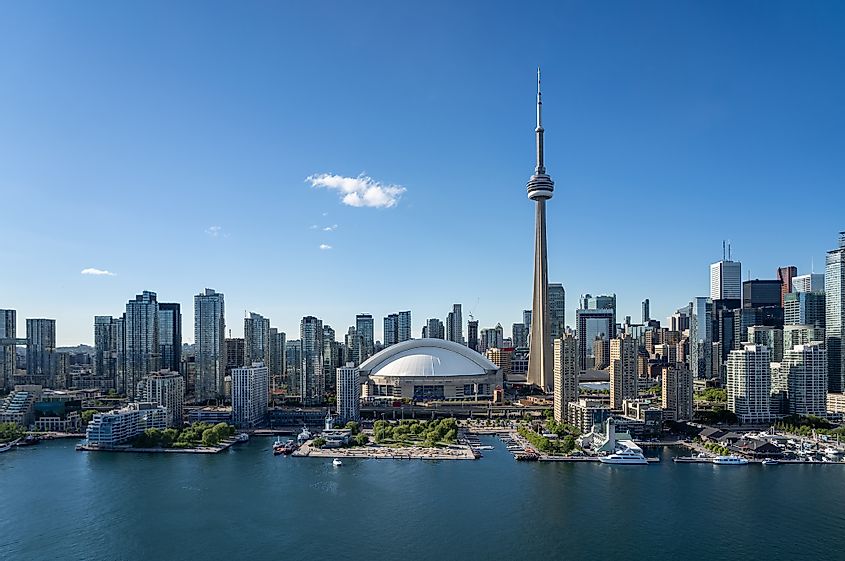
In addition to the largest cities mentioned above, there are several other major cities in Canada. These cities may not have the same population as Toronto or Montreal, but they still contribute significantly to the country’s urban landscape.
One of these cities is Winnipeg, located in the province of Manitoba. With a population of over 750,000 people, Winnipeg is known for its rich cultural heritage and vibrant arts scene. It is also a major economic hub in the prairie region.
Another major city in Canada is Mississauga, located in the province of Ontario. With a population of over 700,000 people, Mississauga is a diverse and multicultural city. It is also home to many businesses and is considered a prominent center for industry and commerce.
Quote: “Quebec City is another notable city in Canada, known for its historic charm and French-speaking population. With a population of over 540,000 people, it is the capital of the province of Quebec and offers a unique blend of European and North American culture.”
Other major cities in Canada include Brampton, Hamilton, and Edmonton, each with its own distinct characteristics and attractions. Brampton, located in Ontario, is known for its cultural diversity and vibrant community. Hamilton, also in Ontario, is a major industrial center with a population of over 500,000 people. Edmonton, located in Alberta, is known for its vibrant arts and festival scene, as well as its proximity to the Canadian Rockies.
| City | Province | Population |
|---|---|---|
| Winnipeg | Manitoba | Over 750,000 |
| Mississauga | Ontario | Over 700,000 |
| Quebec City | Quebec | Over 540,000 |
| Brampton | Ontario | Over 600,000 |
| Hamilton | Ontario | Over 500,000 |
| Edmonton | Alberta | Over 1 million |
These cities, along with the largest cities in Canada, contribute to the country’s diverse and dynamic urban landscape. They offer unique experiences, opportunities, and a vibrant mix of cultures that make Canada a truly captivating destination.
Population Trends in Canadian Cities
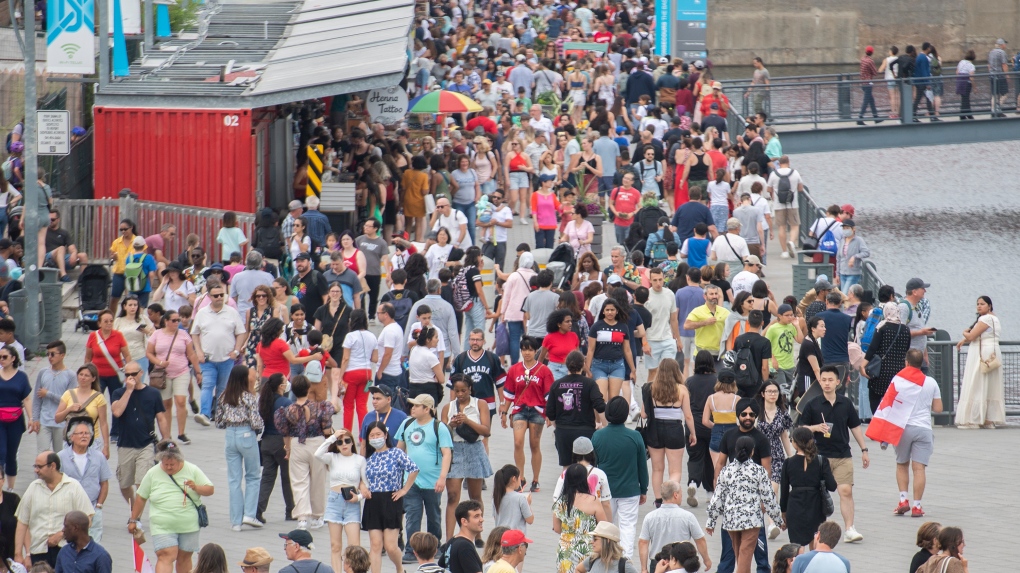
As we enter 2024, it is important to take a closer look at the population trends in Canadian cities. Over the years, these urban centers have experienced varying growth rates, shaped by factors such as immigration, economic opportunities, and regional development. Understanding these trends provides valuable insights into the dynamics and future trajectory of Canadian cities.
One of the key aspects of population trends is the growth rate in Canadian cities. While some cities have seen significant population growth, others have experienced more stagnant numbers. For example, cities like Toronto and Vancouver have consistently attracted residents due to their thriving economies and diverse cultural offerings.
This has led to an influx of immigrants and a higher birth rate, resulting in substantial population growth. On the other hand, smaller cities may face challenges attracting new residents, leading to slower or even negative population growth.
To illustrate these trends, let’s take a closer look at a table showcasing the population growth in select Canadian cities:
| City | Population (2020) | Population (2024) | Growth Rate |
|---|---|---|---|
| Toronto | 2,931,000 | 3,125,000 | 6.6% |
| Vancouver | 675,218 | 716,740 | 6.2% |
| Montreal | 1,749,519 | 1,785,000 | 2.0% |
| Calgary | 1,285,711 | 1,315,000 | 2.3% |
This table highlights the population growth rates in Toronto, Vancouver, Montreal, and Calgary from 2020 to 2024. It is evident that cities like Toronto and Vancouver continue to experience robust growth, with a growth rate of 6.6% and 6.2% respectively. Montreal and Calgary, while still growing, have a slightly lower growth rate of 2.0% and 2.3% respectively.
These population trends have significant implications for urban planning, infrastructure development, and the overall quality of life in Canadian cities. As cities continue to grow, it becomes crucial to ensure sustainable development, adequate housing, transportation systems, and social services to meet the needs of the expanding populations. Additionally, these trends present opportunities for businesses and industries to tap into growing consumer markets and contribute to the economic growth of these cities.
Top Metropolitan Areas in Canada
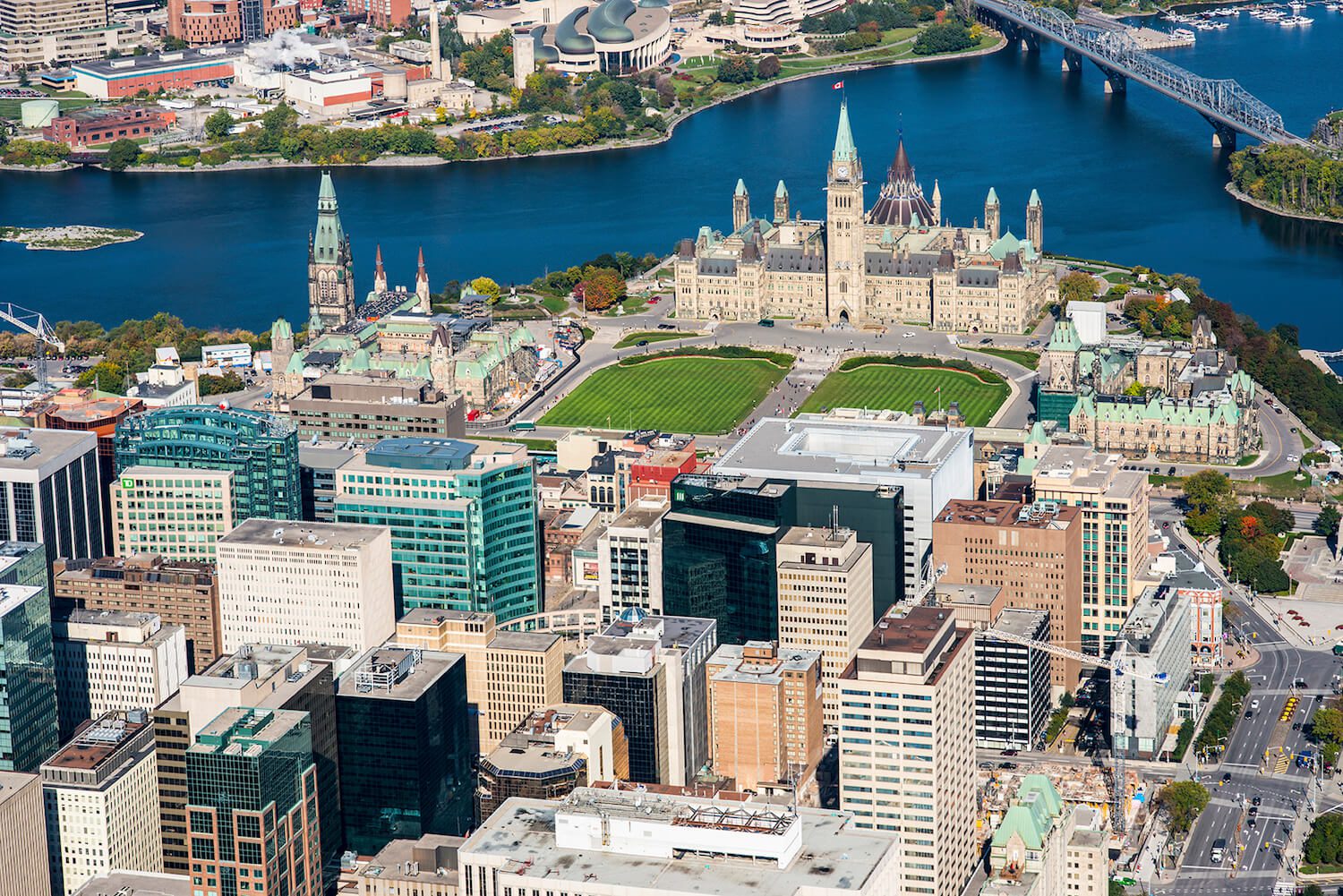
Canada is renowned for its diverse and bustling metropolitan areas, which are home to a significant proportion of the country’s population. These top metropolitan areas not only contribute to Canada’s economic growth but also offer a vibrant cultural scene, modern infrastructure, and attractive opportunities for residents and visitors alike.
Toronto
Toronto, the largest city in Canada, is a thriving metropolis known for its multiculturalism and economic strength. With a population of approximately 6.9 million, Toronto offers a diverse range of industries, including finance, technology, and entertainment. Its iconic skyline, world-class universities, and vibrant arts and dining scene make it a top destination for both business and leisure.
Montreal
Montreal, the second-largest city in Canada, is renowned for its European charm and vibrant cultural scene. With a population of around 4.4 million, Montreal is predominantly French-speaking and offers a unique blend of historic architecture, modern development, and a thriving arts and music scene. It is also known for its festivals, including the famous Montreal International Jazz Festival.
Vancouver
Vancouver, located on the west coast of Canada, is a stunning metropolitan area with a population of approximately 2.7 million. Surrounded by mountains and the Pacific Ocean, Vancouver offers breathtaking natural beauty alongside a thriving urban lifestyle. It is known for its vibrant arts and entertainment scene, diverse culinary options, and outdoor recreational opportunities.
These top metropolitan areas in Canada showcase the country’s diversity, economic growth, and quality of life. Each city has its own unique charm and attractions, making them desirable places to live, work, and visit. Whether you’re seeking career opportunities, cultural experiences, or natural beauty, Canada’s top metropolitan areas have something for everyone.
Urbanization in Canada
Urban centers in Canada have experienced significant growth in recent years, reflecting the trend of urbanization in the country. As more Canadians seek employment opportunities, access to amenities, and a higher quality of life, cities have become increasingly desirable places to live. This has led to the development and expansion of urban areas, transforming them into vibrant hubs of activity and innovation.
One of the key drivers of urbanization in Canada is the concentration of economic opportunities in cities. Major urban centers serve as economic powerhouses, attracting businesses and industries that create jobs and drive economic growth. As a result, individuals and families are drawn to these cities in search of employment and better career prospects.
Additionally, urban centers provide a wide range of amenities and services that enhance the quality of life for residents. From cultural attractions and entertainment venues to educational institutions and healthcare facilities, cities offer a diverse and accessible array of resources. This is particularly appealing to individuals seeking convenience, accessibility, and a vibrant social environment.
While urbanization brings numerous benefits, it also presents challenges. The rapid growth of urban areas can put pressure on infrastructure, leading to issues such as congestion, housing affordability, and environmental impact. However, city planners and policymakers are continuously working to address these challenges and ensure sustainable urban development.
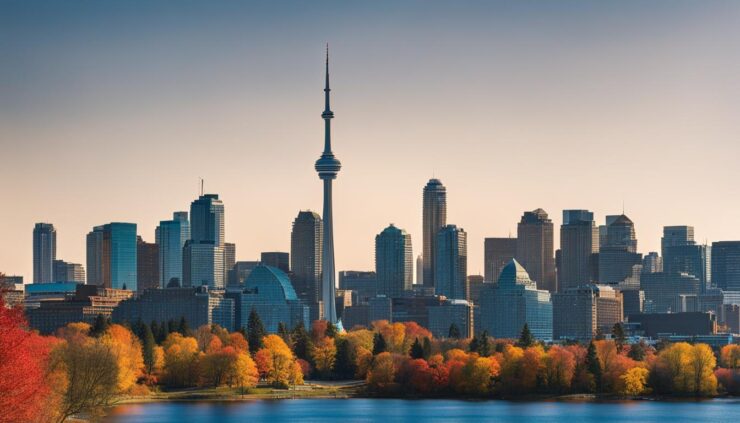
Urbanization and Population Growth
Urbanization in Canada is closely linked to population growth. As more people migrate to cities, the population of urban centers continues to grow at a faster rate compared to rural areas. This population shift has significant implications for the distribution of resources, social dynamics, and the overall development of the country.
In conclusion, urbanization in Canada is a driving force behind the growth and development of cities. The allure of economic opportunities, access to amenities, and a higher quality of life has attracted individuals and families to urban centers. While urbanization brings challenges, it also presents opportunities for innovation, cultural exchange, and economic prosperity.
Conclusion
Canada is home to some of the biggest cities in 2024, ranked by population. These cities play a vital role in shaping the country’s cultural, economic, and social landscape. From Toronto, the largest city in Canada, to Vancouver on the West Coast, these urban centers offer diverse opportunities and attractions.
Toronto, with a population of 2.9 million in 2024, stands as the most populous city in Canada. Known for its multiculturalism and vibrant city life, Toronto continues to attract residents and visitors alike. Montreal, the second largest city, boasts a population of 1.76 million and is renowned for its rich cultural heritage and vibrant arts scene.
Calgary, the third largest city in Canada, has a population of 1.3 million and serves as a major economic hub in Western Canada. Ottawa, the capital city, has a population of 1.02 million and is known for its historic landmarks and governmental institutions. Vancouver, the fourth largest city, offers stunning natural beauty, a diverse population, and a thriving film industry.
As the population in Canada continues to grow, these cities will evolve and provide even more opportunities for their residents and visitors. With their unique characteristics and attractions, these cities will undoubtedly remain as some of the most populated Canadian cities in the years to come.
FAQ
What are the largest cities in Canada in 2024 by population?
The largest cities in Canada in 2024 by population are Toronto, Montreal, Calgary, Ottawa, and Vancouver.
What is the population of Toronto in 2024?
The population of Toronto in 2024 is 2.9 million.
Is Montreal the second largest city in Canada?
Yes, Montreal is the second largest city in Canada with a population of 1.76 million in 2024.
What is the population of Calgary in 2024?
The population of Calgary in 2024 is 1.3 million.
What is the population of Ottawa in 2024?
The population of Ottawa in 2024 is 1.02 million.
What is the population of Vancouver in 2024?
The population of Vancouver in 2024 is 662,248.
Are there any other major cities in Canada?
Yes, other major cities in Canada include Winnipeg, Mississauga, Brampton, Quebec City, Hamilton, and more.
How have Canadian cities’ populations been trending in recent years?
Some cities have seen significant population growth due to factors like immigration and economic opportunities, while others have experienced more stagnant population growth.
What are the top metropolitan areas in Canada?
The top metropolitan areas in Canada include Toronto, Montreal, Vancouver, Calgary, and Ottawa-Gatineau.
Is Canada primarily an urban country?
Yes, Canada is primarily an urban country, with most of its population living in large urban centers.
What are the key features of Canadian cities?
Canadian cities are known for their multiculturalism, vibrant city life, economic opportunities, rich cultural heritage, outdoor recreational opportunities, stunning natural beauty, diverse populations, and thriving arts and film industries.
Source Links
- https://www.southwestjournal.com/biggest-cities-in-canada-2023-by-population/
- https://en.wikipedia.org/wiki/List_of_the_largest_municipalities_in_Canada_by_population
- https://uscanadainfo.com/top-cities-in-canada-by-population/
